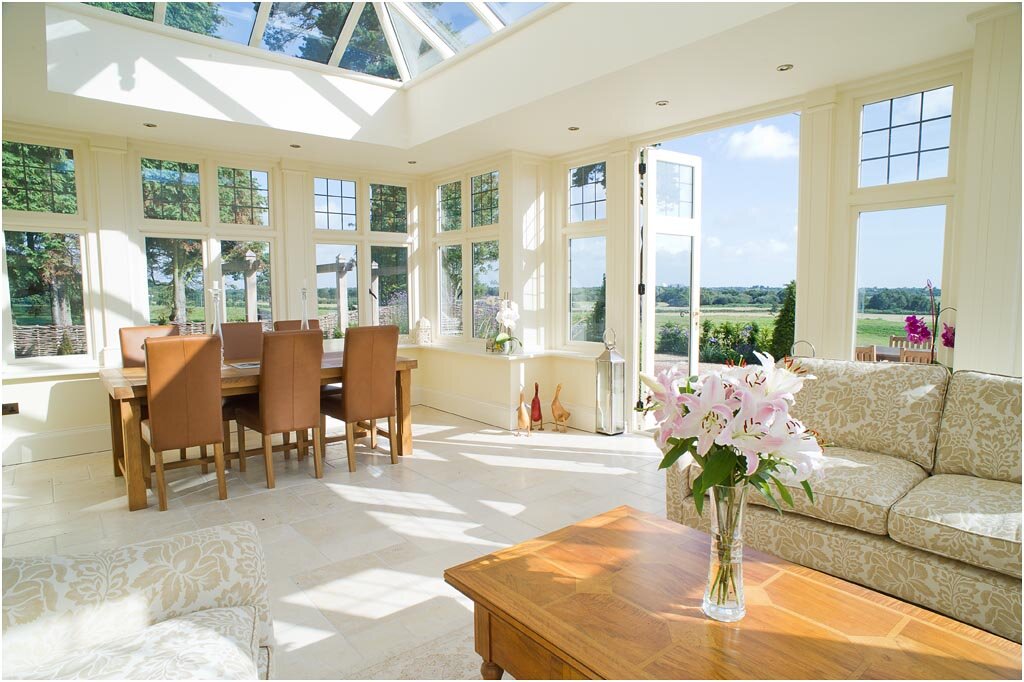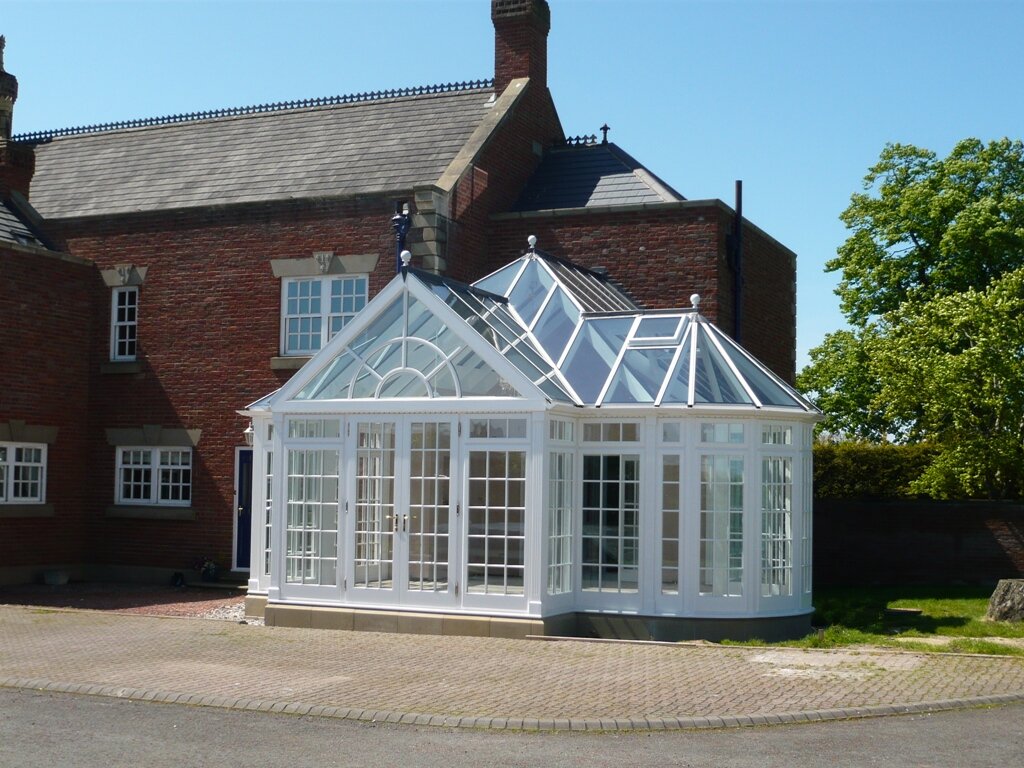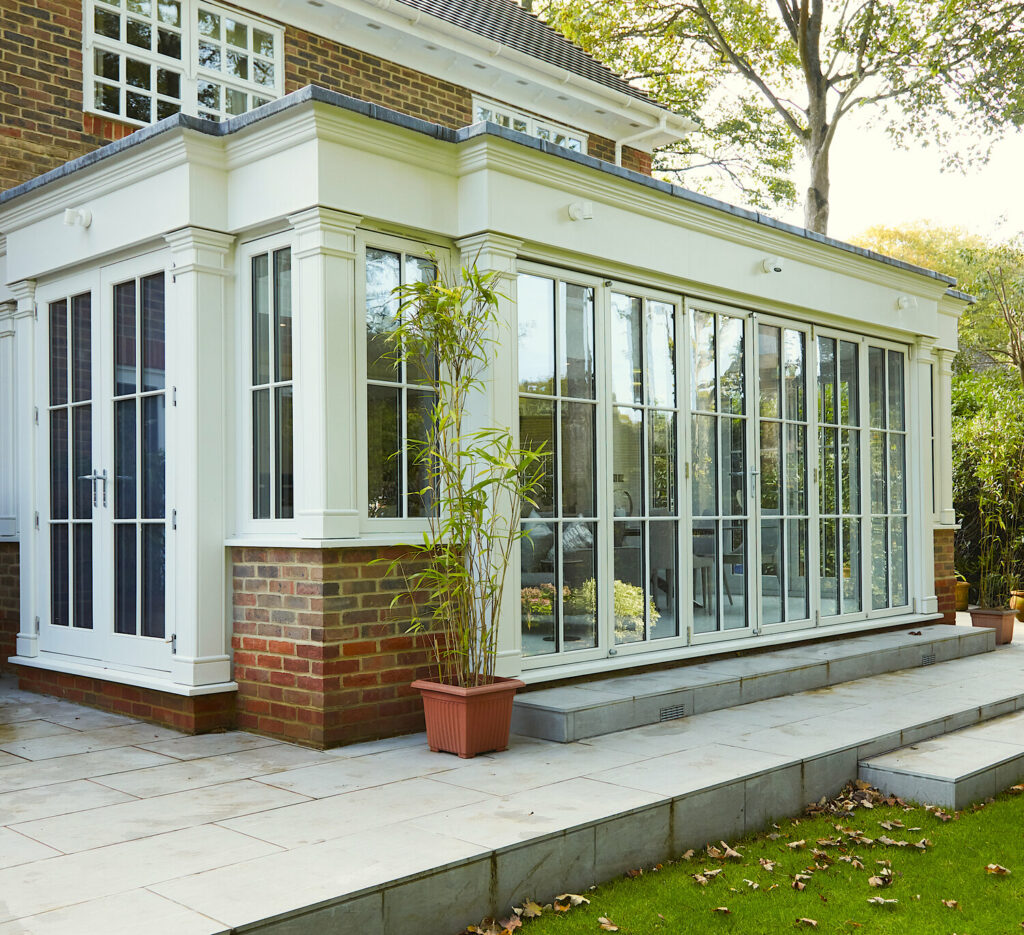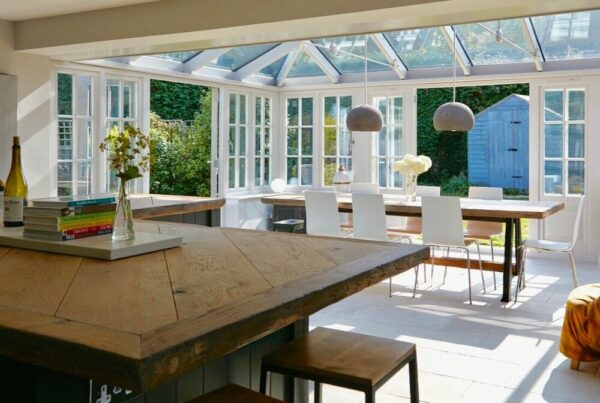If you are thinking about adding to your home, you may be wondering what the difference between a traditional orangery and a conservatory is.
While they both provide you with versatile and attractive space, there are several key differences between the two structures.
Within the below blog, you will discover everything you need to know about both conservatories and traditional orangeries so that you can make the right choice for your home.
What is a conservatory?
A conservatory is a type of home extension where the structure is characterised by:
- Having half of each side wall made from glass
- At least three-quarters of its roof is made from any translucent building material or clear glass.
- Built against the wall of a house with a closing door or window.
- A standalone heating source that is separate from the main house.
Typically, modern conservatories have a glass structure with a brick base and a pitched glazed roof.
That being said, conservatories with solid roofs in place of traditional glass roofs have become increasingly popular with UK homeowners.
What is a traditional orangery?
An orangery is another type of home extension which typically features a brick structure with large windows and a flat roof with a glass lantern.
Orangeries are often confused with conservatories, but they are quite different.
A traditional orangery can be defined by its distinct characteristics:
- Large tall windows on one side – usually south-facing
- Brick or stone structure
- Flat roof with a central glass lantern
- An independent heating source such as a stove
- Wooden shutters to retain heat at night
What is the difference between a conservatory and a traditional orangery?
One of the key differences between a conservatory and a traditional orangery is the roof. As mentioned above, a conservatory must have at least 75% glazing on its roof. An orangery, on the other hand, tends to have a standard roof.
A conservatory is also seen more as a mid-point between your home and your garden. In contrast, orangeries are more visually comparable to an extension as they can be standalone or built against the side of your home.
What are the benefits of a conservatory?
There are many reasons why you may choose to build a conservatory, including:
- More natural light
- A better view of your garden
- More affordable
- More relaxed vibe
- Long-lasting
- It can be used all-year-round
What are the benefits of a traditional orangery?
There are many reasons why you may choose to build an orangery, including:
- More versatile
- More useable space
- More elegant look
- Blend in with your existing brickwork
- Several different roofing options
- Better insulation
- More consistent temperature
- Reduced glare and sunlight
- Long-lasting
- Low maintenance
- It can be used all-year-round
- Add more value to your property
A conservatory or an orangery- which is right for me?
Whether you choose to build a conservatory or a traditional orangery mostly depends on what you want to use the space for.
Do you want somewhere to sit during the summer months and enjoy your surroundings? Or are you looking to extend your kitchen space?
Another factor to consider is your budget. Conservatories are significantly cheaper than orangeries, but they do not add as much value to your home.
Ultimately, you need to think about which option will give you the space you need within your means.






